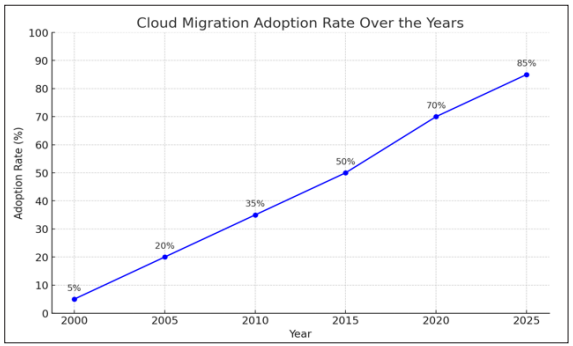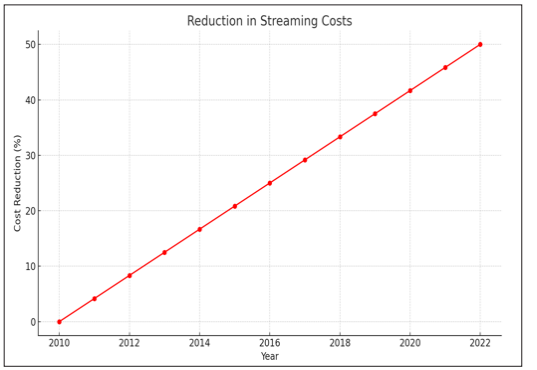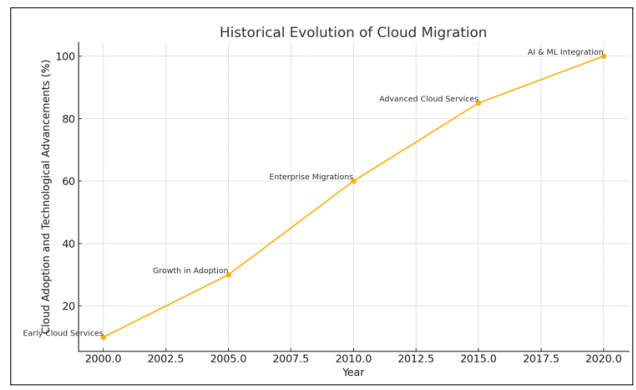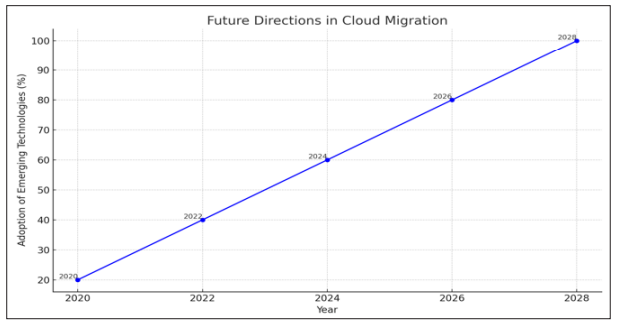Author(s): Goutham Sabbani
One of the most critical cloud migrations ever was Netflix moving to AWS. This initiative, launched and completed in the run-up to 2021, delivered a 50% streaming cost reduction while materially improving the offerings to customers worldwide, proving the potential upside to a practical cloud approach.
Looking back at the history of cloud migration offers a roadmap of significant milestones, plus the technological burdens they relieved, that now inform modern best practices. The industry is moving forward with the technology, and enterprise cloud migrations are more accessible and secure than ever before; the early adoption of cloud services in the 2000s through widespread enterprise migrations during the 2010s has been a continuously evolving landscape.
In this article on Cloud Migration Strategies, we will delve into how to prevent problems and refactor everything to the cloud. This would also help the readers to understand various ways to migrate, why it is essential to assess the organizational readiness, and how to migrate step by step.
Cloud migration has come a long way, from early adopters in the 2000s to mainstream enterprise migrations in the 2010s to the sophisticated, secure solutions we see today. A good example is the benefits in our digital era, which cloud strategies have led to, as seen in Netflix’s migration to AWS [1].
The accompanying chart illustrates the continual growth period of cloud adoption, showcasing important milestones in cloud adoption rates. The way that projects like these continue to surface points to the rate of technology evolution and the importance of proper cloud migration strategy and implementation.

Source: Historical Data on Cloud Migration Adoption
The move of the streaming giant Netflix into AWS illustrates a well-executed cloud migration strategy, which started in the early 2010s and finished around 2021, cutting streaming costs in half during that period and providing for improved global service deployment. Netflix has increased the availability of its app and the quality of the end-user experience while serving millions of viewers globally, and that too without compromising on application performance due to the scalable AWS infrastructure. Switching to AWS helped Netflix to optimize its infrastructure cost-wise. Netflix could use AWS’s pay-as-you-go model to scale resources only when needed instead of owning and managing its infrastructure. This flexibility translated to significant cost savings and directly impacted the company’s bottom line [2].
This graph illustrates the percentage reduction in Netflix’s streaming costs from 2010 to 2021, showing a steady decline and highlighting the cost efficiency achieved through the AWS migration.

Source: Moving Mountains: Netflix’s Migration into VPC
The four phases of Netflix’s cloud migration plan provide insight into the correct way to approach cloud initiatives - a strategy of careful, orchestrated migration rather than a rapid switchover process. Netflix conveniently solved the problems of delivering a service at scale and managing the costs by identifying their requirements to support their infrastructure and utilizing AWS capabilities. This example illustrates how adopting a cloud-first approach can benefit operational efficiency and scalability [3].
Over the last two decades, cloud migration has seen a lot of difference. Then, in the 2000s, cloud services slowly started to be adopted, preluding a new age of tech. Cloud adoption began to take off in the early- to mid-2000s as companies realized the potential. Most enterprises migrated to the cloud in the 2010s, utilizing cloud scalability and cost reduction [4].
Among critical milestones was the advent of more sophisticated cloud services around 2015 that offered new data management and processing possibilities. However, by 2020, businesses’ work was reconstructed entirely with artificial intelligence (AI) and machine learning (ML) in cloud platforms, which provided more elaborate analytics and automation capabilities [5].

Source: Historical Data on Cloud Migration Adoption
As required by each business, we can implement multiple strategies on a case-by-case basis as part of cloud migration. These approaches include: offerings and improve the customer experience).
Evaluating organization readiness for the cloud is essential for cloud migration success stories. This requires finding compliance and security, compliance and business goals, infrastructure, and business needs. These steps make sure that the transition is easy and that all of the advantages of the cloud move increase.
Pre-Migration Planning: The Bottom Line for Successful Cloud Migration starts with outlining your goals + KPIs, drafting a birds- eye migration scope, and choosing the cloud flavor you need to go after. For example, Capital One moved to AWS throughout the 2010s. Capital One took a surgical approach to planning its migration, aiming to improve security, become more agile, and deliver cost savings. They created an end-to-end roadmap and selected AWS for its security and scale [8].

Source: Capital One Case Study
This chart illustrates the progression of cloud migration adoption and advancements over the years, with Capital One’s migration being a significant milestone.
In fact, during the execution phase, pilot tests and migration iterations are vital. This means anything that can be broken is tested for so long before it gets released. These are essential for transferring data, synchronization, application, and system
Post-migration regular monitoring and optimization are required for long-term performance and cost-efficiency. Training and change management are critical to ensuring an organization can effectively use a new cloud environment. Finally, security and compliance are top priorities. The complexity of Johnson & Johnson’s move to Microsoft Azure came after the migration, as most of the subsequent work was dedicated to maintaining and optimizing its cloud environment, reskilling employees, and enabling healthcare regulatory compliance [10].
Emerging Technologies and Trends that Will Influence the Future of Cloud Migration Multi-cloud and hybrid cloud strategies provide flexibility and resiliency (as exemplified by Netflix and the wide range of cloud applications the company operates on.) They improve the operation of the cloud with AI Operations & Machine Learning by resource management and predicting failures. This is in real time because edge computing and IoT integration (consider GE Predix) provide processing at the source. Surviving the modern digital era calls for early, agile adoption of cutting-edge solutions, emerging trends, and capabilities that streamline. The only way to do that is with advanced cloud services like serverless computing and Kubernetes technology. Doing so enables businesses to become more competitive and agile players.

Source: Emerging Technology Adoption Data
This chart illustrates the projected adoption of emerging technologies in cloud migration from 2020 to 2028.
Scaling your business to the cloud is harder but even more necessary in an era where agility, lower costs, and faster service delivery are critical. Case studies from leading tech firms, including Netflix, Capital One, and Spotify, provide examples of the complex work and thoughtful planning necessary to shift to the cloud successfully. Newer technologies like AI, edge computing, and the facilitation of multi-cloud strategies only increase the possibility of getting even more out of cloud migration. Thanks to cutting-edge cloud services and continuous adaptation to the new era of digital business, companies can keep up and thrive in the marketplace over the long run through innovation.
